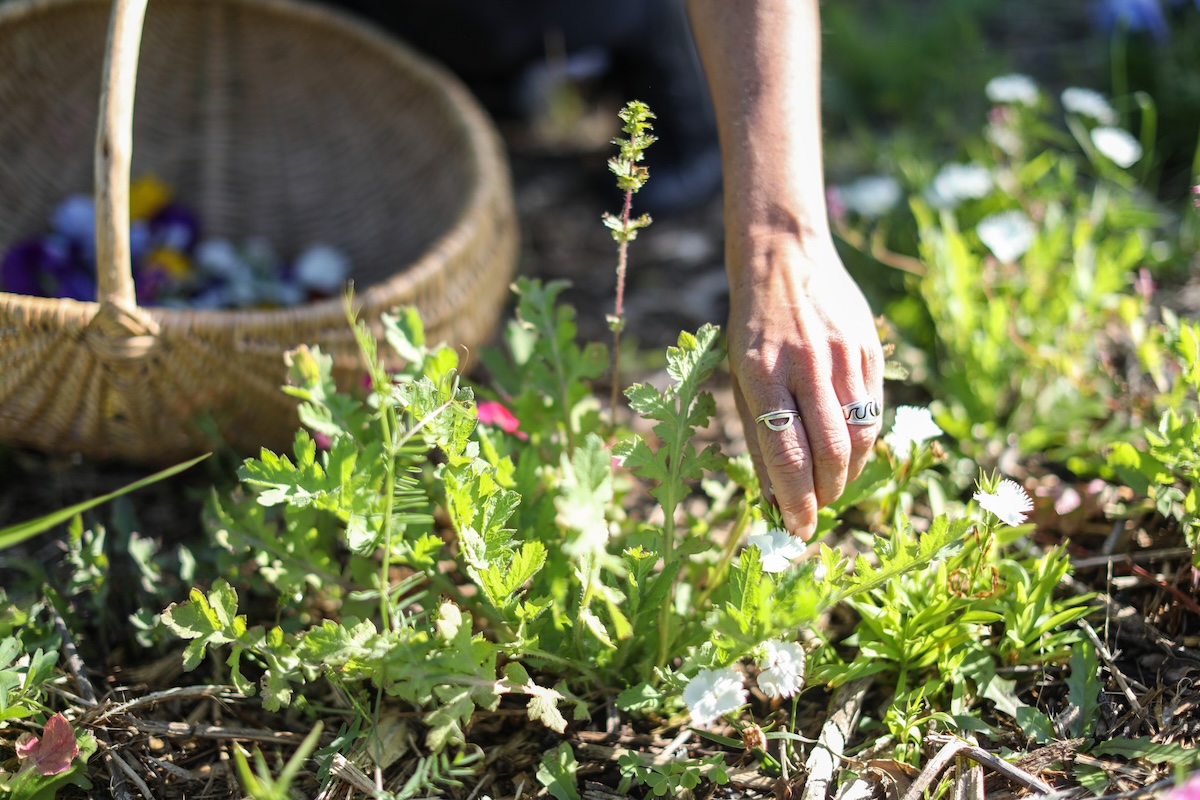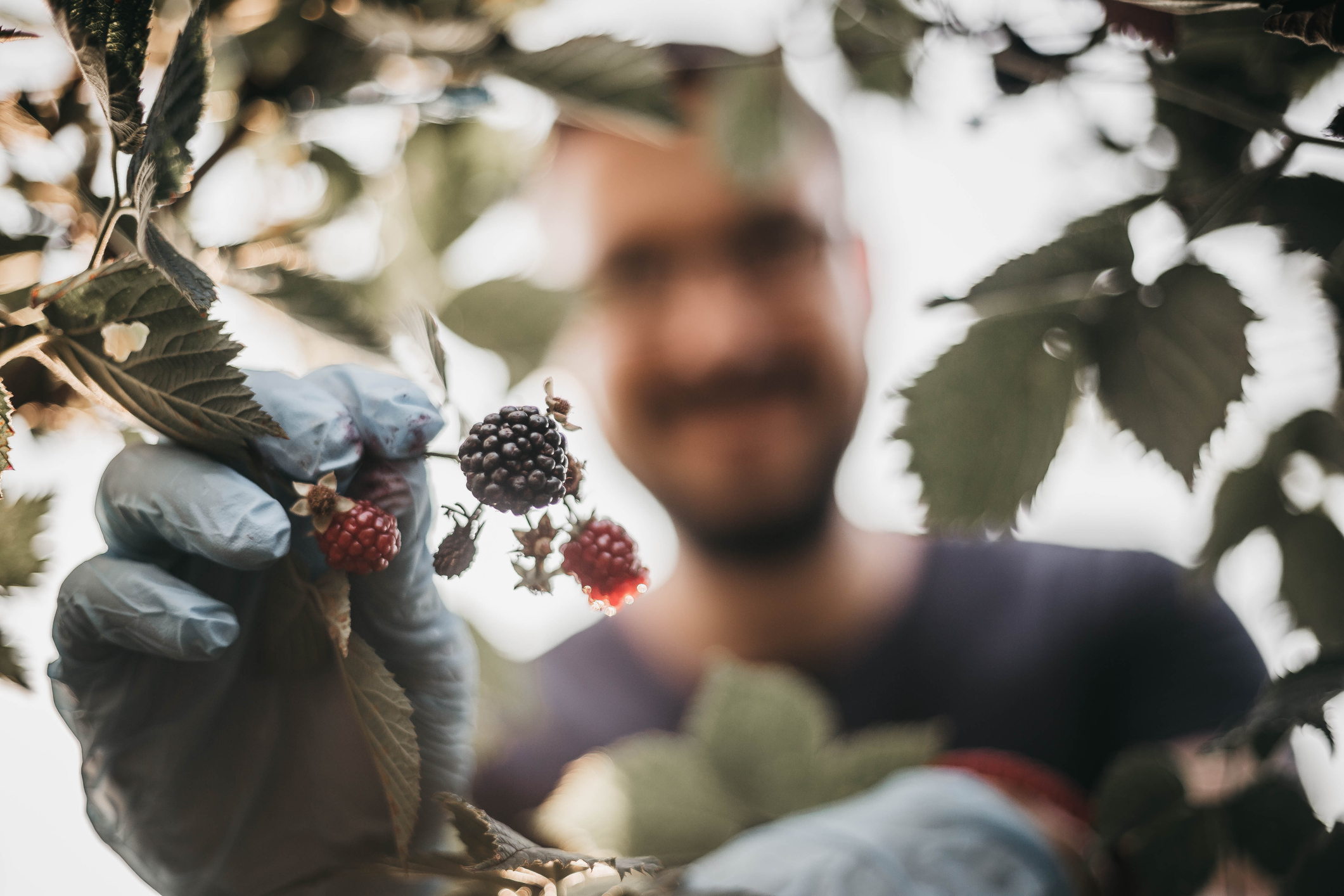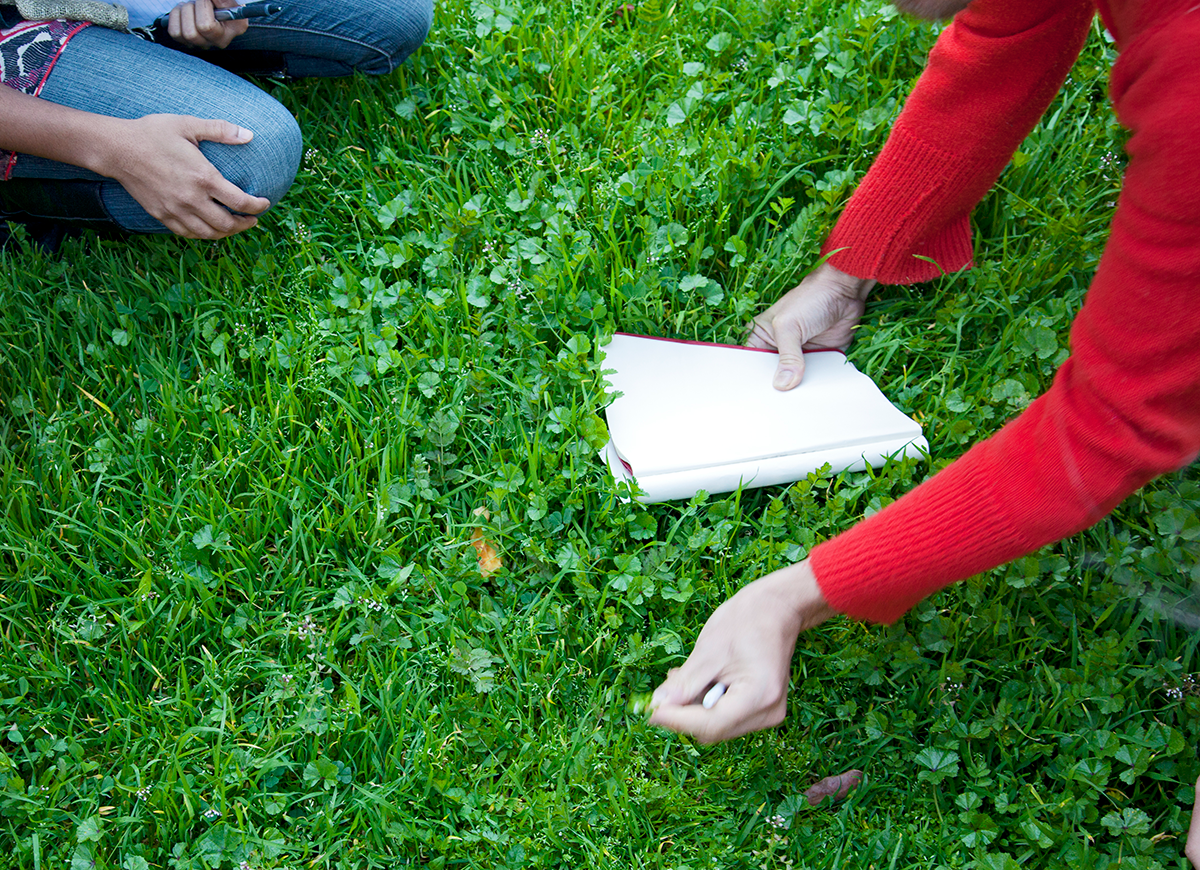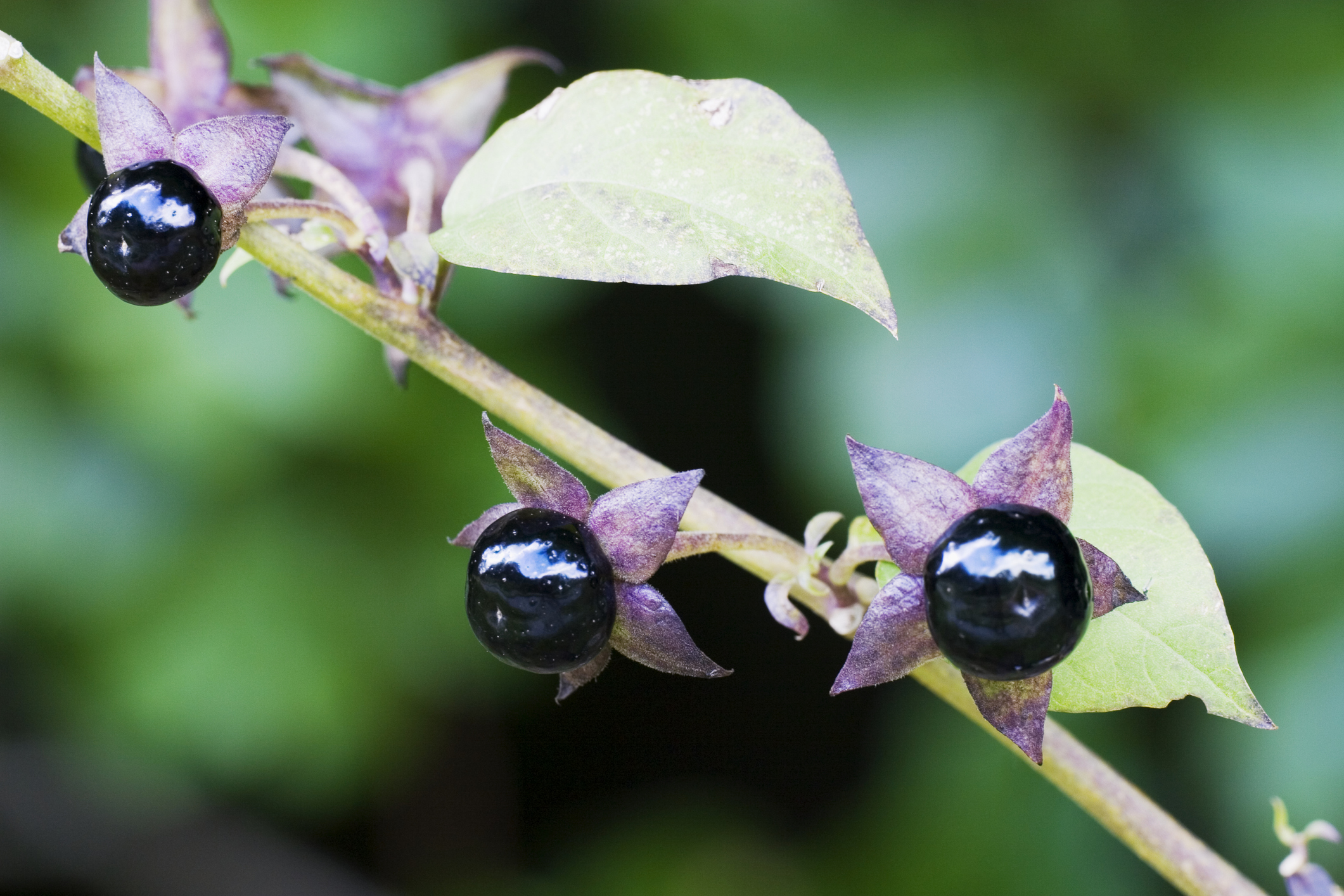

We may earn revenue from the products available on this page and participate in affiliate programs. Learn More ›
Actress and author Alicia Silverstone recently put her fans into panic mode when she bit into a poisonous berry that she thought was a tomato. After a couple of bites, she noticed a peppery flavor that didn’t seem quite right. It turned out that the tomato look-alike was actually a poisonous Jerusalem cherry (Solanum pseudocapsicum).
Unripe berries from this plant can be particularly dangerous, leading to issues with the nervous system and symptoms including abdominal pain, vomiting, and fever. Consuming too much of this plant can even be fatal. Fortunately, Silverstone didn’t swallow any berries and walked away without any health issues.
Why do people forage?
For thousands of years, people have eaten berries, herbs, mushrooms, seeds, flowers, nuts, roots, and foliage growing in the wild. Some people are now trying to bring back this tradition. Called foraging, this act of gathering wild food for free can be done while exploring natural spaces like hiking trails and even in your own backyard.
People enjoy foraging for many reasons, including spending more time outside connecting to nature, saving time and money, exploring new healthy ingredients to include in recipes, reaping the health benefits of consuming nutrient-rich fresh edibles, and feeling more self-reliant and connected to the land.
Interested in foraging? Avoid a scare like Silverstone experienced by learning how to forage at home without putting yourself at risk.
Follow these guidelines for safe foraging.
The key to safe backyard foraging is patience. Learn about local plants and take your time to try out new foraged foods per recommended steps from experts.
1. Learn to identify plants.
“Identifying safe edible plants in your yard requires keen observation and knowledge of local flora,” says Mike Drouin, gardening and landscaping expert and co-founder of Reefertilizer. “Start by familiarizing yourself with common plants through reliable foraging guides or botanical apps,” he says. Purchase field guides for your local area and download apps like iNaturalist and PlantNet.
It’s also helpful to engage with local gardening groups or online forums where seasoned foragers share their experiences, tips, and plant identifications, says Drouin. Before putting anything in your mouth, double-check if it’s safe by cross-referencing more than one trustworthy source. Never assume that if an animal eats something it is also safe for humans.

2. Know your yard conditions.
“It’s also important to know your yard’s history, including any pesticides or chemicals that might have been used, as these can make even edible plants unsafe to consume,” says Loren Taylor, landscaping and gardening expert and owner of Outdoor Fountain Pros. Never forage in an area that was sprayed by pesticides or herbicides since that can cause health problems, and of course, avoid using these harsh chemicals in your yard.
3. Test plant characteristics and safety.
Look for distinct characteristics such as leaf shape, flower color, and growth habits, says Drouin. Learn how to use the Universal Edibility Test to see if something is safe. The test involves breaking a plant into its individual parts (stems, leaves, flowers, fruit), smelling the plant, placing it on your skin to check for allergic reactions, tasting it and seeing what happens within 15 minutes, and observing your body for any adverse effects over the course of several hours. It’s important to understand that there are cases in which only some parts of a plant are safe to eat.
4. Avoid plants with certain smells or reactions.
“The smell of a plant can help establish if it is edible, and you should avoid anything with a strong, unpleasant smell or something that smells rotting,” says Graham Smith, gardening expert at LBS Horticulture. “You should especially avoid anything with a pear or almond-like scent, as this can be an indicator of cyanide,” says Smith.
“You should also not eat any plants that cause adverse reactions on your skin such as tingling or burning, and avoid plants with green or white berries,” notes Smith. “Additionally, if a plant has milky sap, fine hairs, spines, umbrella-shaped flowers or shiny, waxy leaves, these are common characteristics of poisonous plants,” he says. Bottom line: If you aren’t 100-percent certain that something is safe to eat, then do not put it in your mouth.
If you think you have consumed a toxic plant by mistake, contact poison control immediately at www.poison.org or 1-800-222-1222.

Watch out for these toxic look-alikes.
Like what happened to Silverstone, we can all easily get tricked by a toxic look-alike. By being mindful about how to forage and taking precautions, you can avoid tasting a plant that isn’t safe. Here are some common toxic look-alike plants to keep an eye out for while foraging in your yard and beyond.
Creeping buttercup (Ranunculus repens): This invasive weed mimics flat-leaf parsley, but can cause severe abdominal pain, vomiting, diarrhea, irregular heartbeat and more.
False dandelion (Hypochaeris radicata L.): “Another common mix-up is between dandelion greens and the toxic false dandelion; the latter has a more elongated leaf shape and a hollow stem,” says Drouin. The plant also is called flatweed and has low poison severity.
Horse nettle (Solanum carlinense): The fruit produced by horse nettles can look like green or yellow cherry tomatoes, says Smith. “The fruit and other parts of the horse nettle are poisonous to humans due to the toxic alkaloids they contain,” he adds.
Lily of the valley (Convallaria majalis): It is often confused with wild garlic and poisonous if ingested, says Taylor.
Moonseed (Menispermum canadense): “Moonseed plants can look very similar to grapes, but all parts of the plant are poisonous and the fruit can potentially be fatal if ingested,” notes Smith. “Grapes usually tend to have round seeds, whereas moonseed fruit will have a single crescent-shaped seed,” he says.
Poison hemlock (Conium maculatum): “Poison hemlock is a dangerous plant that can be mistaken for wild carrot or Queen Anne’s lace, but it’s extremely toxic,” warns Taylor.
Pokeberry (Phytolacca americana): The berries from pokeweed plants look similar to blueberries. “Just a handful of their purple-black berries are enough to be fatal,” says Smith. “The pokeberries should be easy to identify due to the pink-purple stalks that the plant has.”
Nightshade (Solanum dulcamara): These berries also may look like blueberries but contain a deadly amount of toxic alkaloids. “If ‘blueberries’ taste bitter or are not growing on a woody shrub, it is very likely that you are looking at a nightshade plant instead,” says Smith.

Design your own foraging haven right at home.
Besides exploring what is already growing in your yard, you can create an edible landscape filled with herbs, berries, edible flowers, and more. Be strategic and map out which plants go where to get the right amount of sun or shade to help them thrive.
Taylor recommends plants that are both beautiful and edible for homeowners to enjoy foraging from as they grow. She suggests herbs like mint, thyme, rosemary, and sage since they are easy to grow and great for cooking. “Depending on your climate, consider planting fruit trees like apple trees and bushes such as blueberry bushes, or raspberry canes. Edible flowers like nasturtiums and pansies add color to your garden and can be eaten in salads,” she says.
Drouin prefers incorporating plants like wild strawberries, which produce delicious fruit and attract pollinators. “Chickweed is another great option; it’s abundant and offers mild, tasty leaves. For leafy greens, consider planting lamb’s quarters or purslane, both of which can add nutrition to your meals. Herbs such as garlic chives and mint are also fantastic additions, providing both flavor and potential for tea,” he says.
Depending on where you live, additional common edible plants include prickly pear cactus, elderflowers, morels, rose hips, pine nuts, and amaranth. Finally, a number of weeds are edible and nutritious, including the most popular and easily recognizable dandelion. Others include clover (some varieties), bittercress, thistle, nettles, chicory, and wild garlic.
